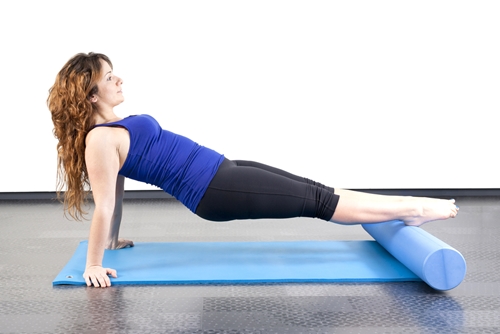
Should you incorporate foam rolling into your fitness routine?
Maintaining a regular fitness routine and making time each week to devote to workouts on your home gym equipment is very commendable. It’s important to make exercise a priority as part of living an overall healthy lifestyle.
While you are dedicated to running on your home treadmill or riding your stationary bike, you might not be as focused on the warm up and cool down aspects of the workout. They are often overlooked and underrated, but they are just as important as the meat, so to speak, of the session itself. A sandwich isn’t really a sandwich if it’s just the turkey and lettuce without bread on each end.
There are a variety of ways to incorporate warm up and cool down sessions before and after running on a TRUE PS825 Home Treadmill, though stretching is better left until the end because your muscles will be warm and more elastic. Another great cool down option is foam rolling.
What is foam rolling?
Massages feel great and do an excellent job of loosening up tight muscles. Foam rolling is a way to give yourself a massage. A foam roller is a piece of equipment used for myofascial release to get rid of “knots” that form in muscles. These knots are actually trigger points or myofascial adhesions, and they occur when connective tissue bundles muscles together. This can happen because of stress, training, overuse, injuries and muscle imbalances. Whatever the case may be, knots can cause pain, and releasing them is a great source of relief.
Keep in mind, foam rolling is not the most pleasant experience, but it can be necessary if you’re an avid runner or spend a lot of time biking on a TRUE ES900 Home Recumbent Bike. Your lower body muscles are sure to be tight and need to be released every so often to avoid complications like injury or overtraining.
In order to work out the knots with a foam roller, you can roll back and forth over the painful area for a minute, spending extra time and applying more pressure to the knot or trigger point itself. Try not to roll over bony areas (like your kneecaps), and remember to always stretch after your foam roll. Myofascial release is something you can do every day and after every workout. The looser your muscles are, the better you’ll feel and you’ll see an improvement in your workouts.
Most common places to foam roll
IT Band: The iliotibial band runs down the outside of your leg from your hip to your knee. It tightens very easily and is a leading cause of knee pain in runners. To foam roll this area, you’ll lay across the roller with one hip pointed toward the floor and one hip pointed toward the ceiling. The foam roller should be between the knee and hip. Gently begin to roll and back forth from the knee to the hip, applying extra pressure on sensitive spots. Continue this motion for about 60 seconds, then switch to the other side.
Calves: Calf muscles are another spot for runners and bikers that cramp up easily. Sit on the floor with your legs extended. Place the foam roller under one calf and gently roll from your ankle to your knee, holding for an extra few seconds on more painful spots. Continue on this side for about a minute, then switch.
Hamstrings and quads: To foam roll your hamstrings, begin in the same position as you did for the calves, sitting on the floor with your legs extended. This time, place the foam roller under one thigh and roll from the knee to where the back of the leg meets the butt. Continue rolling back and forth for about 60 seconds, then switch sides. Once you’ve done both hamstrings, flip over so the foam roller is under one of the tops of your thighs. Like with the hamstrings, roll from your knee to the top of your hip over your quad. Roll out each side for about a minute.
